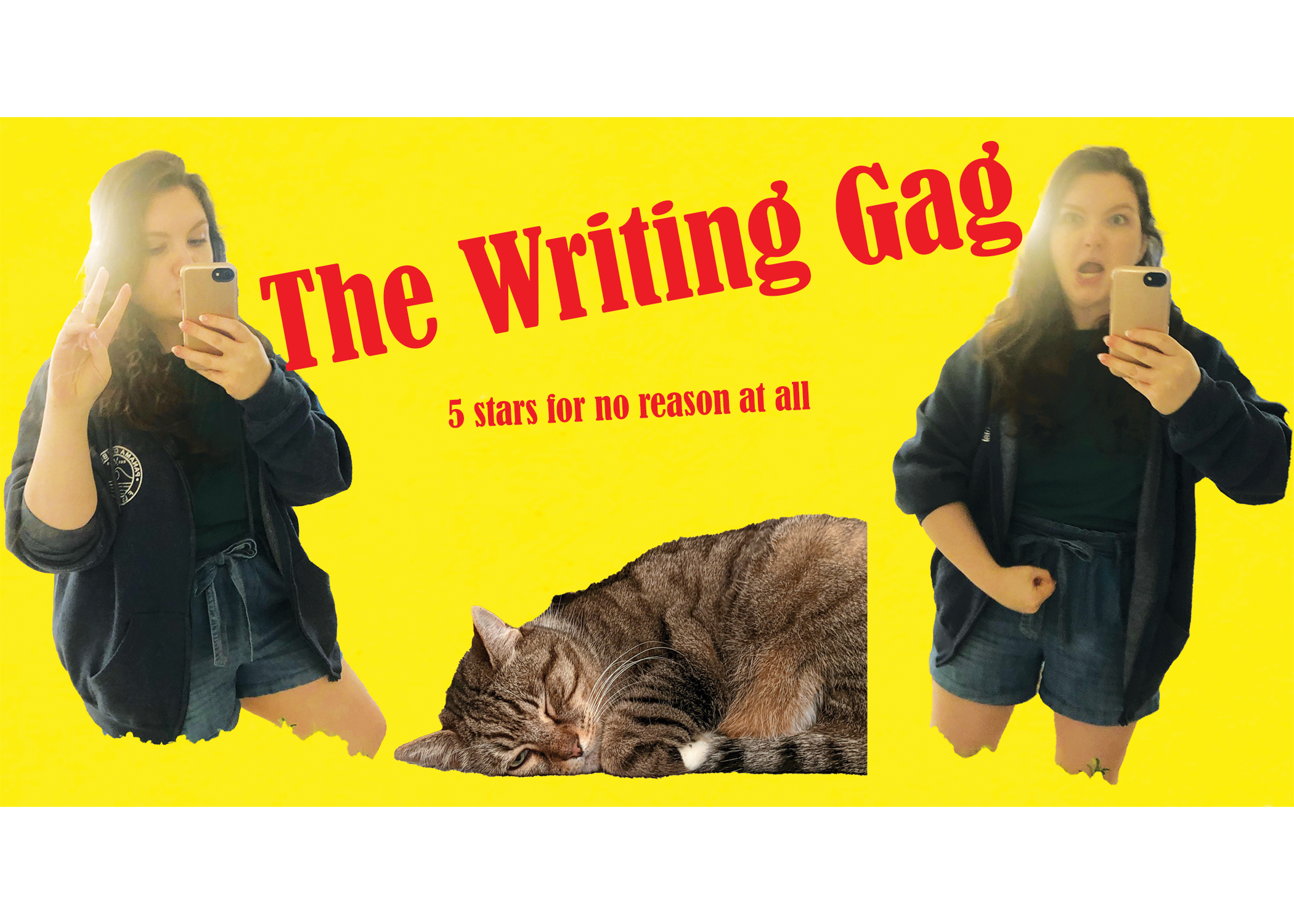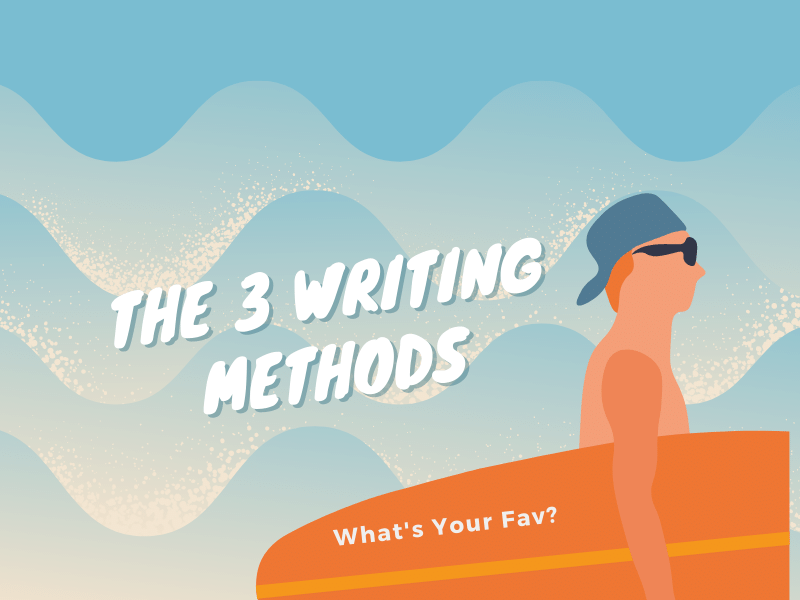What Are The 3 Main Writing Methods?

The 3 Major Writing Methods
Alright, what are the 3 major writing methods? *Sighs*
Just know we’re about to get into some testy waters everyone. Grab a life jacket. Lock up your children. Load your pistols. ‘Cause it’s time to talk about writing methods.
*Sound screams of a terrified audience*

Alright, maybe it’s not that dramatic. The thing is, a lot of people have a lot of ideas about how people should be writing. Chances are, you have some strong ideas about what method is best.
Outlining? Discovery Writing? Quilting? A mix of two? A mix of three, or a strong shot of one?
Hold your horses now and Get your panties out of a twist gentlemen. First, let’s define each one to make sure we’re on the same page.
The Three Major Writing Methods Defined
Strict Outlining: The method of writing where you outline your novel in its entirety before writing it. Shocking definition, I know.
Discovery Writing: This method is also called pansting, which is not to be confused with the word pantsing, the act of pulling someone’s pants down.
Okay, yeah, let’s just use the term Discovery Writer. This method is where you write your novel from beginning to end with no outline. You “discover” what happens along the way. Eh? EH??

Quilting: According to the book Imaginative Writing, Quilting is where you write a bunch of scenes out of sequence. Then when you have all the scenes you want written down, you arrange them until you have a story. Want to write the big finale first? Great. The first kiss scene? Perfect. You can write all the best scenes first and save the more mundane scenes for last. Then you just arrange them until you have a complete story.
My First Love
Now, I have to confess something. My first love was Discovery Writing. I wrote my second novel from beginning to end TWICE. And guess what? I hated it. A lot of this can be blamed on the fact I was fifteen when I wrote it. Even still, the writing was dull and immature. The plot was boring. The font I used? Atrocious. It was just a bad, bad time.

Then something magical happened. I listened to James Patterson’s Masterclass and he talked about his love for outlining. I didn’t even know it was a possibility! Outlining your novel? Getting the hard part out of the way in the beginning, so I can just focus on making the writing great? SIGN. ME. UP.
The Results
Well, I did it. I spent a month on the outline. Then I cranked out that novel in 12 weeks. Is it perfect? No. Ha. God, no. It’s terrible, but I’m comforted by the fact that it’s at least complete with fewer plot holes . . . which on second review might be a lie BUT I SWEAR IT WAS BETTER THAN IF I’D DISCOVERY WRITTEN IT, okay? Lord, take a pint of blood why don’t you?
This is not a universal truth, by the way. Some people say outlining is the death of creativity.
Look at Stephen King. He said that, “outlines are the last resource of a bad fiction writers who wish to God they were writing master’s theses.”
Even in his book On Writing, he talks about how he never plots out his work because he find the method atrocious.
Ouch. If you’re an outliner, take a deep breath. It’s going to be okay.

Not everyone will agree with us. That’s great! It makes the experience of outlining even more special.
Here are some famous people who’ve made an outline of their novels include:
James Salter
Sylvia Plath
Jim Butcher
J.K. Rowling
Discovery Writing
However, Discovery Writing is also a really special experience and a super popular writing method. To be honest, I think it’s the most hardcore of the writing methods. Starting a novel with no idea where it’s going? Can you imagine the cojones?
Stephen King can. So can fantasy writer Brandon Sanderson. He writes novels that are around 120,000 words each. It’s been rumored that he’s published over 3,700,000 words in total. All of those words were written without a set plan according to his lecture series on YouTube.
This should be extremely comforting to Discovery Writers. You can do this! It’s possible to write a best-selling series by just flying by the seat of your pants! And if you need a little extra guidance, no one says you can’t outline the major events in your novel before writing. Here’s looking at you Save the Cat!

A Big Difference Between The 3 Main Writing Methods
It’s an important note that Brandon Sanderson says the main difference between outlining and discovery writing is the amount of work you want to put in ahead of time. Writing a novel is a damn ton of work no matter how you do it, but you can choose when you want to do the bulk of the work.
Outlining means working hard at the beginning. You get all your ducks in a row, you write, and, if you do it correctly, there’s less editing that needs to happen. LESS people, not none.
*Whimpers* it’s never none.
With discovery writing you write the novel and at the end, the editing process can be a lot more taxing. Plot holes are a real thing that can happen in a story. Also, you might not have a clear vision of your characters when you first start writing, so they’re completely different people from beginning, middle, and end. These are all things that have to be fixed in the editing process.
So here’s the question: “when do you want to work?”

Authors who Quilt
Now, finding authors who quilt is a little more difficult. Author Jenny Hanson has written a wonderful blog segment on quilting. She finds this method to be very useful in her writing. She likes to write out all the scenes she knows as a starting place.
Her recommendation is to have a strong foundation of story structure knowledge. Make sure you understand the 3 Act Structure as well as the 12 step Hero’s Journey is her recommendation. I won’t comment on my knowledge of these as it would be embarrassing and ruin my street cred.

Now, after you have all your scenes written out, you can organize them into an actual story structure!
This method seems to be the most unspoken about, but it’s still just as valid as the other two!
Quilting is a method I really enjoy. Before I even outline my novels, I’ll write out a few scenes I want to include. They serve as little check points I want to hit along the way.
Do I always hit them? No. Do I always regret it? YES. Does that mean I suck at outlining? YES, but that’s my bidness, talk to the hand Jackaroo!
Right, back to the blog.
Quilting out scenes is useful in getting a better feel for your characters and how they interact with each other. It also serves a test drive. Is this novel idea what I want to write? Is my idea substantial enough to last over 80,000 words? Would it make a better novella which is around 40,000 - 50,000 words?
Or would it be even better as a short story?
What if I Need a Combination of the Three Writing Methods?
Perhaps none of these methods meet your needs. Maybe instead, you’d rather mix and match a couple of them. Discovery writing can still be your main method, but you might want to outline some major events that happen. Maybe you’d love to outline your entire novel, but you want to quilt out some scenes first to make sure it’s a good idea. Any way you want to pair these methods is a good decision.
Don’t let anyone invalidate your choices as an author. Writing stories is an extremely personal experience, and only you can decide what’s best for you. *tears up* I believe in your success. I believe you can do it!

No, not even Stephen King can tell you you’re wrong for your decision. Well, he can. And he probably will. But that doesn’t mean we have to listen to him.
I would recommend trying out each of these methods before shunning one or the other. They all have value and you can learn something from each of them!
Have you tried out one of these methods? Leave a comment down below and let me know your experience! Also, make sure to share this blog for me on your favorite socials … *puts hands together and falls to the ground* Please, PLEASE share this on your socials.
Aight, Peace
XOXO - Kate






